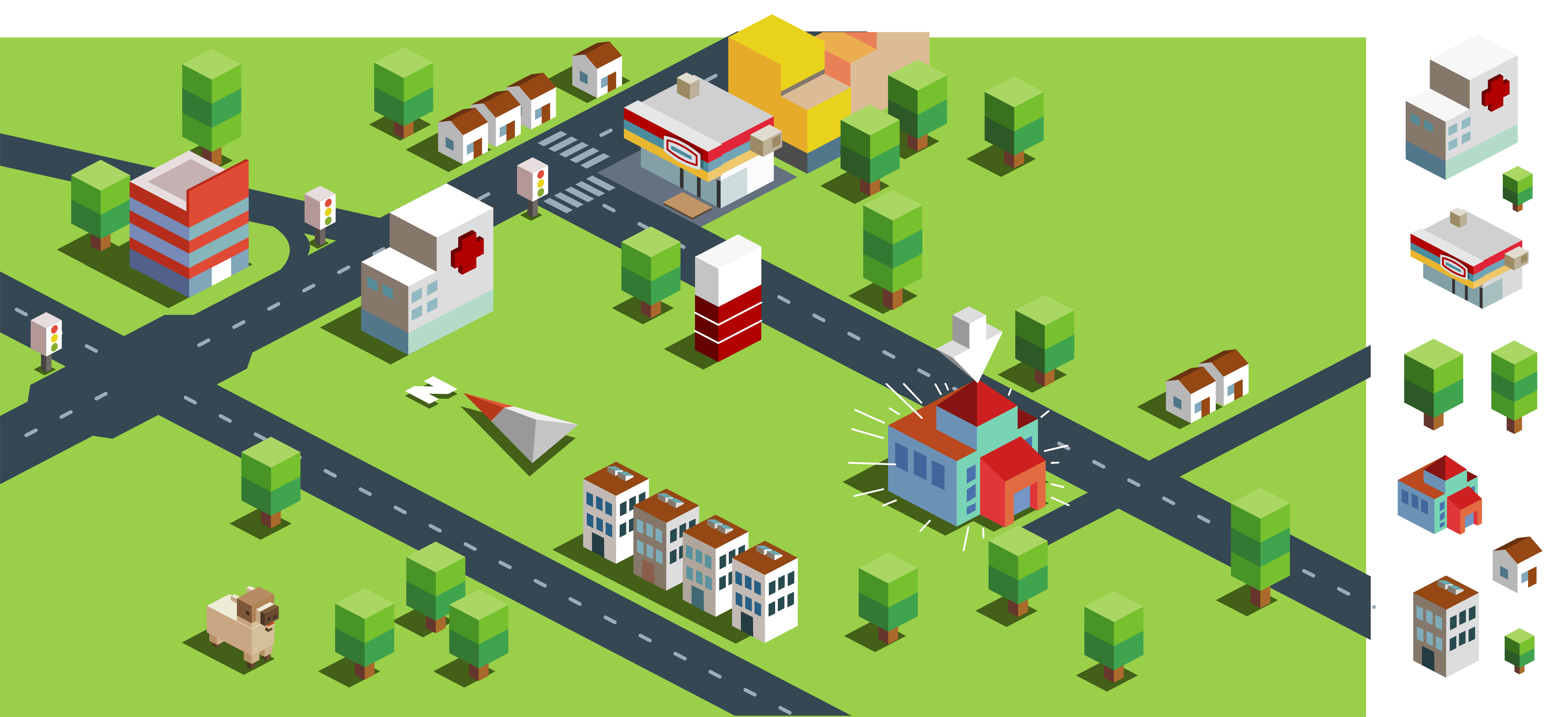Post: Foundations of a Smart City

A city must have an intragovernmental data team to become truly smart
Many current cities, often partnered with private companies, have adopted programs and initiatives that utilize innovative technologies in improving urban management to become so-called smart cities. The technocentric development and top-down approach of these technocratic smart cities, however, have been commonly criticized as favoring neoliberal ethos which ignored the common good (Cardullo and Kitchin, 2019), while a truly smart city should be applying advanced technologies to serving its citizens in equitable and sustainable ways. The technocratic outcome is mainly the result of fragmented city infrastructures (Townsend, 2013; Blauer, 2013) and heavy reliance on profit-driven technology companies (Amnesty International, 2019). Hence, the foundation of a smart city needs to be an agency that is capable of bridging the historically fragmented resources and recently developed smart technologies together to benefit the public good rather than private interests.
A governmental technology and data branch with strong leadership, in the form of an intragovernmental data team in a city, can support the city’s transformation to a smart city by managing the city’s data-driven, citizen-centric decision-making process. To facilitate the adoption of data-driven technologies, it must recruit experts to oversee and guide data and technology-related activities of all departments, agencies, etc. To balance public interest and market-led solutions, it must also communicate effectively with non-governmental stakeholders such as non-profits, private companies, and citizens to determine goals and priorities that are grounded in citizens’ civil, social, and political rights. More specifically, it should enforce data sharing as well as establish privacy and security protocols not only within governmental departments but also between the government and the citizens on an open data platform for public engagement. This team should follow New York City’s successful model which sets the team in the consultancy position for data management, decision support, and operational analysis (Campbell and Goldsmith, 2018).
Filling the blank of smart data governance
Having the intragovernmental data team in the representation of smart data governance in the neoliberal market is essential to protect the public interest of citizens. In the increasingly digitalized world, data are more and more associated with real values just like money and land. Several technocentric smart cities projects that have been driven by private companies and limited governmental control have demonstrated the issues of private controls including inducing surveillance capitalism, lack of accountability and transparency, and untraceable decision-making process (Amnesty International, 2019). For instance, Sidewalk Lab’s Quayside case alarms how the private sector often ignored the citizens’ interest and eventually lost trust from the public (Summers, 2018; Morgan, 2020). There is a need for representation and advancement of shared interest, which the government’s team should meet (Chui et al., n.d.).
Currently, there is an abundance of technologies and initiatives that are rooted in the public interest. These include shared data platforms, security protocols, and internet infrastructures established through governments’ partnerships with either for-profit organizations (Amazon Web Services) or not-for-profit organizations (Comprehensive Knowledge Archive Network). They are useful, but an intragovernmental data team could provide enhanced services that neither NGOs nor private firms can compete with (Chui et al., n.d.). For example, when a governmental agency uses a third-party algorithm provider, the agency could not reveal all information as they wish due to trade secrecy claims (Brauneis and Goodman, 2018). It is also a security risk to have third parties manage sensitive data. Only institutionalized data administration systems could ensure that the data will be managed ethically and accessible to the public without unnecessary barriers.
Moreover, having an intragovernmental data team can aid the city to achieve the most potential out of urban data analytics, as no third-party consultant can know the institutional culture better than the city’s employees. The data team would be able to work with all departments to help overcome bureaucratic fragmentations and other city-specific problems. For example, it could not only develop algorithms for the police department but also cooperate with digital literacy and equity programs. It could develop an efficient intranet database to improve staff’s workflow so well as an accessible open data platform to help mitigate equitability and sustainability issues that arose from techno-oriented practices.
Precedents show promising results
Numerous cities, even countries, have adopted an intragovernmental data team, setting successful precedents in structural innovation for other cities to study. For example, in 2013, New York City has formed a Mayor Office Data Analytics team to serve as in-house data and analytical techniques consultancy for city agencies (Campbell and Goldsmith, 2018). It has three programmatic areas to provide advanced analytics services to other city agencies, facilitate data-sharing among city agencies, and administer the city’s open data program. Its Cooling towers and Legionnaires’ Disease Response project in 2015 combined data from numerous sources to successfully locate places of bacteria incubation, which has demonstrated the value of an intragovernmental data-analytics team.
No governments have emphasized on digitalization as much as Estonia. As the governmental technology branch merged from several institutions, the Estonian Information System Authority “lead the development of national IT systems and ensure national cybersecurity with our partners.” (Introduction and Structure | Estonian Information System Authority, n.d.) It has developed X-Road, a free and open-source data exchange software, to link unified and secure data between organizations (X-Road® Data Exchange Layer, n.d.). It possesses several features for intragovernmental data teams to learn from (Heller, 2017). For example, it has established mature protocols and clear guidelines for security and privacy. An individual owns all information recorded about him or her. It is unlawful to access unauthorized data. Business and land-registry information is considered public. Its digitalizing efforts not only protect the public interest but also have been reported to save Estonia 2% of its GDP a year in salaries and expenses.
Setting up the data team takes a long way
Despite the advantages of the data team, fostering such structural innovation will take a lot of time, money, and the right people, because it covers a broad range of stakeholders as well as challenges many normative believes and traditional ways of doing things (Campbell and Goldsmith, 2018). It might take a long time and process for a city to develop a functional team and system, but it is the solid foundation to make a city truly smart by making data-driven decisions for the public good.
Especially for the context of the U.S., it has been proven hard for the public sector to recruit talents as the private sector offers higher salaries. Retaining talent, research and development, and day-to-day operations of the team will demand high initial funding, but in the long term, the cost of gathering information will be reduced and the price of hiring consultants will be eliminated. The political environment could also put any incubated teams on halts. The public might fear excessive governmental control in data management. A solution is that the city should involve the citizens from the beginning and use a “let’s make it work together” ethos in relationship building (Goldstein, 2013).
As smart technologies have already changed the nature and economics of infrastructure (Woetzel et al., 2018), sitting back to let the neoliberal market force take hold is not a viable approach. While it might be easier for bigger cities to undertake this approach, smaller cities might find this particularly difficult due to the lack of resources to develop a tech-savvy intragovernmental team. Cities should take steps by surveying local interests and designing a team that fit their contexts.
References
- Amnesty International, 2019. Smart cities: dreams capable of becoming nightmares. Retrieved October 21, 2020, from https://www.amnesty.org/en/latest/research/2019/06/smart-cities-dreams-capable-of-becoming-nightmares/
- Blauer, B., 2013. Why Data Must Drive Decisions in Government, in: Beyond Transparency: Open Data and the Future of Civic Innovation. Code for America Press.
- Campbell, C. and Goldsmith, S., 2018. The Mayor’s Office of Data Analytics, in d’Almeida, A.C. (ed.) Smarter New York City: How City Agencies Innovate. Columbia University Press. Chapter 2.
- Cardullo, P. and Kitchin, R., 2019. Being a ‘citizen’in the smart city: up and down the scaffold of smart citizen participation in Dublin, Ireland. GeoJournal, 84(1), pp.1-13.
- Chui, M., Farrell, D., & Jackson, K. (n.d.). How government can promote open data
- McKinsey. How Government Can Promote Open Data. Retrieved October 21, 2020, from https://www.mckinsey.com/industries/public-and-social-sector/our-insights/how-government-can-promote-open-data
- Data.gov.sg. (n.d.). Data.Gov.Sg. Retrieved October 21, 2020, from https://data.gov.sg/about
- Goldstein, B., 2013. Open Data in Chicago: Game On, in: Beyond Transparency: Open Data and the Future of Civic Innovation. Code for America Press. https://beyondtransparency.org/chapters/part-1/open-data-in-chicago-game-on/
- Heller, N., 2017. Estonia, the Digital Republic
|The New Yorker. https://www.newyorker.com/magazine/2017/12/18/estonia-the-digital-republic - Introduction and structure
|Estonian Information System Authority. (n.d.). Retrieved October 21, 2020, from introduction-and-structure.html - Morgan, K., 2020. Googling the City: In Search of the Public Interest on Toronto’s ‘Smart’ Waterfront. https://www.ssoar.info/ssoar/bitstream/handle/document/66859/ssoar-up-2020-1-morgan_et_al-Googling_the_City_In_Search.pdf?sequence=1
- Summers, N., 2018. Google’s smart city dream is turning into a privacy nightmare. Engadget. https://www.engadget.com/2018/10/26/sidewalk-labs-ann-cavoukian-smart-city/
- Townsend, A.M., 2013. The $100 Billion Jackpot, in: Smart Cities: Big Data, Civic Hackers, and the Quest for a New Utopia. WW Norton & Company.
- Woetzel, Jonathan; Remes, Jaana; Boland, Brodie; Lv, Katrina; Sinha, Suuver; Strube, Gernot; Means, John; Law, Johnathan; Cadena, Andres; von der Tann, Valerie, 2018. Smart Cities: Digital Solutions for a More Livable Future.
- X-Road® Data Exchange Layer. (n.d.). X-Road® Data Exchange Layer. Retrieved October 21, 2020, from https://x-road.global

